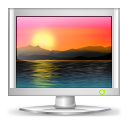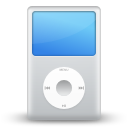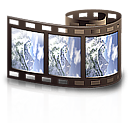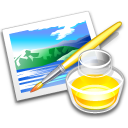Topic outline
Screen Capture with Desktop computer software
 A screencast is a digital recording of computer screen output, also known as a video screen capture, often containing audio narration. The term screencast compares with the related term screenshot; whereas screenshot is a picture of a computer screen, a screencast is essentially a movie of the changes over time that a user sees on a computer screen, enhanced with audio narration.
A screencast is a digital recording of computer screen output, also known as a video screen capture, often containing audio narration. The term screencast compares with the related term screenshot; whereas screenshot is a picture of a computer screen, a screencast is essentially a movie of the changes over time that a user sees on a computer screen, enhanced with audio narration.Screencasts can help demonstrate and teach the use of software features. Creating a screencast helps software developers show off their work. Screencasts are a useful tool for ordinary software users as well, to help report bugs (the movie takes the place of potentially unclear written explanations) or to show others how a given task is accomplished in a specific software environment. Screencasts are excellent tools for learning how to use computers, and several podcasts have started to teach computer users how to use software through screencasts.
(from the Wikipedia term Screencast)
Screen Capture, Web services
 Screen Capture, Web services are web-based tools that lets you create screencasts without installing any software. You just click the record button and your screen activity is recorded along with narration from your microphone. then publish your screencast in high-definition Flash format. Later, you can easly share your screencast inside a Moodle Course, on Twitter, YouTube or anywhere else on the web. Even iPhone users can view your screencast.
Screen Capture, Web services are web-based tools that lets you create screencasts without installing any software. You just click the record button and your screen activity is recorded along with narration from your microphone. then publish your screencast in high-definition Flash format. Later, you can easly share your screencast inside a Moodle Course, on Twitter, YouTube or anywhere else on the web. Even iPhone users can view your screencast.You can also use...
Using USTREAM service and USTREAM Producer to capture video, audio and broadcast a live stream into your Moodle course (By embedding the stream) can be done after:
1. Registering a free account with USTREAM
2. Downloading and installing the free USTREAM Producer for Windows or Mac (or using the Android App or iPhone app)
3. Start recording your Live session or Desktop ScreenCast and embedding it into your Course. (Live screencast will be archived under your account)
Video podcast
 Video podcast (sometimes shortened to vodcast) is a term used for the online delivery of video on demand video clip content via Atom or RSS enclosures. The term is used to distinguish between podcasts which most commonly contain audio files and those referring to the distribution of video where the RSS feed is used as a non-linear TV channel to which consumers can subscribe using a PC, TV, set-top box, media center or mobile multimedia device. Web television series are often distributed as video podcasts.
Video podcast (sometimes shortened to vodcast) is a term used for the online delivery of video on demand video clip content via Atom or RSS enclosures. The term is used to distinguish between podcasts which most commonly contain audio files and those referring to the distribution of video where the RSS feed is used as a non-linear TV channel to which consumers can subscribe using a PC, TV, set-top box, media center or mobile multimedia device. Web television series are often distributed as video podcasts.(from the Wikipedia term Video Podcast)
Video NLE Software
 Non-linear editing for films and television post-production is a modern video editing method which enables direct access to any video frame in a digital video clip, without needing to play or scrub/shuttle through adjacent footage to reach it, as was necessary with historical video tape linear video editing systems. It is the most natural approach when all assets are available as files on hard disks rather than recordings on reels or tapes, while linear editing is related to the need to sequentially view a film or read a tape to edit it. On the other hand, the NLE method is similar in concept to the "cut and paste" technique used in film editing. However, with the appropriation of non-linear editing systems, the destructive act of cutting of film negatives is eliminated. Non-linear, non-destructive editing methods began to appear with the introduction of digital video technology. It can also be viewed as the audio/video equivalent of word processing, which is why it is called desktop video editing in the consumer space.
Non-linear editing for films and television post-production is a modern video editing method which enables direct access to any video frame in a digital video clip, without needing to play or scrub/shuttle through adjacent footage to reach it, as was necessary with historical video tape linear video editing systems. It is the most natural approach when all assets are available as files on hard disks rather than recordings on reels or tapes, while linear editing is related to the need to sequentially view a film or read a tape to edit it. On the other hand, the NLE method is similar in concept to the "cut and paste" technique used in film editing. However, with the appropriation of non-linear editing systems, the destructive act of cutting of film negatives is eliminated. Non-linear, non-destructive editing methods began to appear with the introduction of digital video technology. It can also be viewed as the audio/video equivalent of word processing, which is why it is called desktop video editing in the consumer space.(from the Wikipedia term None-Liner Video Editing)
Online (NLE) video editing
Audio authoring software
 A digital audio editor is a computer application for audio editing, i.e. manipulating digital audio. Digital audio editors are the main software component of a digital audio workstation.
A digital audio editor is a computer application for audio editing, i.e. manipulating digital audio. Digital audio editors are the main software component of a digital audio workstation.Editors designed for use with music typically allow the user to do the following:
- Record audio from one or more inputs and store recordings in the computer's memory as digital audio
- Edit the start time, stop time, and duration of any sound on the audio timeline
- Fade into or out of a clip (e.g. an S-fade out during applause after a performance), or between clips (e.g. crossfading between takes)
- Mix multiple sound sources/tracks, combine them at various volume levels and pan from channel to channel to one or more output tracks
- Apply simple or advanced effects or filters, including compression, expansion, flanging, reverb, audio noise reduction and equalization to change the audio
- Playback sound (often after being mixed) that can be sent to one or more outputs, such as speakers, additional processors, or a recording medium
- Conversion between different audio file formats, or between different sound quality levels
Typically these tasks can be performed in a manner that is both non-linear and non-destructive.
(from the Wikipedia term Digital audio editing)
We reccommand Audacity for its simplicity multi platform openess and extensive feature list:
Audacity is a free, easy-to-use and multilingual audio editor and recorder for Windows, Mac OS X, GNU/Linux and other operating systems. You can use Audacity to:
- Record live audio.
- Convert tapes and records into digital recordings or CDs.
- Edit Ogg Vorbis, MP3, WAV or AIFF sound files.
- Cut, copy, splice or mix sounds together.
- Change the speed or pitch of a recording.
- And more! See the complete list of features.
Photo editing
 A raster graphics editor is a computer program that allows users to paint and edit pictures interactively on the computer screen and save them in one of many popular “bitmap” or “raster” formats such as JPEG, PNG, GIF and TIFF.
A raster graphics editor is a computer program that allows users to paint and edit pictures interactively on the computer screen and save them in one of many popular “bitmap” or “raster” formats such as JPEG, PNG, GIF and TIFF.Usually an image viewer is preferred over a raster graphics editor for viewing images.
Some editors specialize in the editing of photographs such as the popular Adobe Photoshop and the free (Open Source) GIMP while others are more geared to artist-created illustrations, like the Adobe Fireworks.
Common Features
- Select a region for editing.
- Draw lines with brushes of different color, size, shape and pressure
- Fill in a region with a single color, gradient of colors, or a texture.
- Select a color using different color models (e.g. RGB, HSV), or by using a color dropper.
- Add typed letters in different font styles.
- Remove scratches, dirt, wrinkles, and imperfections from photo images.
- Composite editing using layers.
- Edit and convert between various color models.
- Apply various filters for effects like sharpening and blurring.
- Convert between various image formats.
See also
(from the Wikipedia term Raster graphics editor)
PDF
 Embedding a PDF file into your course, correctly! the ICT way!
Embedding a PDF file into your course, correctly! the ICT way!Presentation (PPT/ODP)
 Following, are various techniques for Embedding a presentaion (probably PPT or ODP) file into your course.
Following, are various techniques for Embedding a presentaion (probably PPT or ODP) file into your course.Topic 9